-
EXECUTIVE SUMMARY
-
Market Overview
-
Key Findings
-
Market Segmentation
-
Competitive Landscape
-
Challenges and Opportunities
-
Future Outlook
-
MARKET INTRODUCTION
-
Definition
-
Scope of the study
-
Research Objective
-
Assumption
-
Limitations
-
RESEARCH METHODOLOGY
-
Overview
-
Data Mining
-
Secondary Research
-
Primary Research
-
Primary Interviews and Information Gathering Process
-
Breakdown of Primary Respondents
-
Forecasting Model
-
Market Size Estimation
-
Bottom-Up Approach
-
Top-Down Approach
-
Data Triangulation
-
Validation
-
MARKET DYNAMICS
-
Overview
-
Drivers
-
Restraints
-
Opportunities
-
MARKET FACTOR ANALYSIS
-
Value chain Analysis
-
Porter's Five Forces Analysis
-
Bargaining Power of Suppliers
-
Bargaining Power of Buyers
-
Threat of New Entrants
-
Threat of Substitutes
-
Intensity of Rivalry
-
COVID-19 Impact Analysis
-
Market Impact Analysis
-
Regional Impact
-
Opportunity and Threat Analysis
-
Food Color Market, BY Type (USD Billion)
-
Natural Colors
-
Synthetic Colors
-
Caramel Colors
-
Lake Colors
-
Food Color Market, BY Application (USD Billion)
-
Food Beverages
-
Cosmetics Personal Care
-
Pharmaceuticals
-
Nutraceuticals
-
Food Color Market, BY Formulation (USD Billion)
-
Liquid
-
Powder
-
Gel
-
Food Color Market, BY Source (USD Billion)
-
Plant-Based
-
Animal-Based
-
Mineral-Based
-
Food Color Market, BY Regional (USD Billion)
-
North America
-
US
-
Canada
-
Europe
-
Germany
-
UK
-
France
-
Russia
-
Italy
-
Spain
-
Rest of Europe
-
APAC
-
China
-
India
-
Japan
-
South Korea
-
Malaysia
-
Thailand
-
Indonesia
-
Rest of APAC
-
South America
-
Brazil
-
Mexico
-
Argentina
-
Rest of South America
-
MEA
-
GCC Countries
-
South Africa
-
Rest of MEA
-
Competitive Landscape
-
Overview
-
Competitive Analysis
-
Market share Analysis
-
Major Growth Strategy in the Food Color Market
-
Competitive Benchmarking
-
Leading Players in Terms of Number of Developments in the Food Color Market
-
Key developments and growth strategies
-
New Product Launch/Service Deployment
-
Merger Acquisitions
-
Joint Ventures
-
Major Players Financial Matrix
-
Sales and Operating Income
-
Major Players RD Expenditure. 2023
-
Company Profiles
-
Naturex
-
Financial Overview
-
Products Offered
-
Key Developments
-
SWOT Analysis
-
Key Strategies
-
Colorcon
-
Financial Overview
-
Products Offered
-
Key Developments
-
SWOT Analysis
-
Key Strategies
-
Chr. Hansen
-
Financial Overview
-
Products Offered
-
Key Developments
-
SWOT Analysis
-
Key Strategies
-
Cargill
-
Financial Overview
-
Products Offered
-
Key Developments
-
SWOT Analysis
-
Key Strategies
-
Sensient Technologies
-
Financial Overview
-
Products Offered
-
Key Developments
-
SWOT Analysis
-
Key Strategies
-
ADM
-
Financial Overview
-
Products Offered
-
Key Developments
-
SWOT Analysis
-
Key Strategies
-
GNT Group
-
Financial Overview
-
Products Offered
-
Key Developments
-
SWOT Analysis
-
Key Strategies
-
Univar Solutions
-
Financial Overview
-
Products Offered
-
Key Developments
-
SWOT Analysis
-
Key Strategies
-
Eckert and Ziegler
-
Financial Overview
-
Products Offered
-
Key Developments
-
SWOT Analysis
-
Key Strategies
-
Allied Biotech
-
Financial Overview
-
Products Offered
-
Key Developments
-
SWOT Analysis
-
Key Strategies
-
BASF
-
Financial Overview
-
Products Offered
-
Key Developments
-
SWOT Analysis
-
Key Strategies
-
Tate and Lyle
-
Financial Overview
-
Products Offered
-
Key Developments
-
SWOT Analysis
-
Key Strategies
-
Funkin
-
Financial Overview
-
Products Offered
-
Key Developments
-
SWOT Analysis
-
Key Strategies
-
Kalsec
-
Financial Overview
-
Products Offered
-
Key Developments
-
SWOT Analysis
-
Key Strategies
-
Appendix
-
References
-
Related Reports
-
LIST Of tables
-
LIST OF ASSUMPTIONS
-
North America Food Color Market SIZE ESTIMATES & FORECAST, BY TYPE, 2019-2035 (USD Billions)
-
North America Food Color Market SIZE ESTIMATES & FORECAST, BY APPLICATION, 2019-2035 (USD Billions)
-
North America Food Color Market SIZE ESTIMATES & FORECAST, BY FORMULATION, 2019-2035 (USD Billions)
-
North America Food Color Market SIZE ESTIMATES & FORECAST, BY SOURCE, 2019-2035 (USD Billions)
-
North America Food Color Market SIZE ESTIMATES & FORECAST, BY REGIONAL, 2019-2035 (USD Billions)
-
US Food Color Market SIZE ESTIMATES & FORECAST, BY TYPE, 2019-2035 (USD Billions)
-
US Food Color Market SIZE ESTIMATES & FORECAST, BY APPLICATION, 2019-2035 (USD Billions)
-
US Food Color Market SIZE ESTIMATES & FORECAST, BY FORMULATION, 2019-2035 (USD Billions)
-
US Food Color Market SIZE ESTIMATES & FORECAST, BY SOURCE, 2019-2035 (USD Billions)
-
US Food Color Market SIZE ESTIMATES & FORECAST, BY REGIONAL, 2019-2035 (USD Billions)
-
Canada Food Color Market SIZE ESTIMATES & FORECAST, BY TYPE, 2019-2035 (USD Billions)
-
Canada Food Color Market SIZE ESTIMATES & FORECAST, BY APPLICATION, 2019-2035 (USD Billions)
-
Canada Food Color Market SIZE ESTIMATES & FORECAST, BY FORMULATION, 2019-2035 (USD Billions)
-
Canada Food Color Market SIZE ESTIMATES & FORECAST, BY SOURCE, 2019-2035 (USD Billions)
-
Canada Food Color Market SIZE ESTIMATES & FORECAST, BY REGIONAL, 2019-2035 (USD Billions)
-
Europe Food Color Market SIZE ESTIMATES & FORECAST, BY TYPE, 2019-2035 (USD Billions)
-
Europe Food Color Market SIZE ESTIMATES & FORECAST, BY APPLICATION, 2019-2035 (USD Billions)
-
Europe Food Color Market SIZE ESTIMATES & FORECAST, BY FORMULATION, 2019-2035 (USD Billions)
-
Europe Food Color Market SIZE ESTIMATES & FORECAST, BY SOURCE, 2019-2035 (USD Billions)
-
Europe Food Color Market SIZE ESTIMATES & FORECAST, BY REGIONAL, 2019-2035 (USD Billions)
-
Germany Food Color Market SIZE ESTIMATES & FORECAST, BY TYPE, 2019-2035 (USD Billions)
-
Germany Food Color Market SIZE ESTIMATES & FORECAST, BY APPLICATION, 2019-2035 (USD Billions)
-
Germany Food Color Market SIZE ESTIMATES & FORECAST, BY FORMULATION, 2019-2035 (USD Billions)
-
Germany Food Color Market SIZE ESTIMATES & FORECAST, BY SOURCE, 2019-2035 (USD Billions)
-
Germany Food Color Market SIZE ESTIMATES & FORECAST, BY REGIONAL, 2019-2035 (USD Billions)
-
UK Food Color Market SIZE ESTIMATES & FORECAST, BY TYPE, 2019-2035 (USD Billions)
-
UK Food Color Market SIZE ESTIMATES & FORECAST, BY APPLICATION, 2019-2035 (USD Billions)
-
UK Food Color Market SIZE ESTIMATES & FORECAST, BY FORMULATION, 2019-2035 (USD Billions)
-
UK Food Color Market SIZE ESTIMATES & FORECAST, BY SOURCE, 2019-2035 (USD Billions)
-
UK Food Color Market SIZE ESTIMATES & FORECAST, BY REGIONAL, 2019-2035 (USD Billions)
-
France Food Color Market SIZE ESTIMATES & FORECAST, BY TYPE, 2019-2035 (USD Billions)
-
France Food Color Market SIZE ESTIMATES & FORECAST, BY APPLICATION, 2019-2035 (USD Billions)
-
France Food Color Market SIZE ESTIMATES & FORECAST, BY FORMULATION, 2019-2035 (USD Billions)
-
France Food Color Market SIZE ESTIMATES & FORECAST, BY SOURCE, 2019-2035 (USD Billions)
-
France Food Color Market SIZE ESTIMATES & FORECAST, BY REGIONAL, 2019-2035 (USD Billions)
-
Russia Food Color Market SIZE ESTIMATES & FORECAST, BY TYPE, 2019-2035 (USD Billions)
-
Russia Food Color Market SIZE ESTIMATES & FORECAST, BY APPLICATION, 2019-2035 (USD Billions)
-
Russia Food Color Market SIZE ESTIMATES & FORECAST, BY FORMULATION, 2019-2035 (USD Billions)
-
Russia Food Color Market SIZE ESTIMATES & FORECAST, BY SOURCE, 2019-2035 (USD Billions)
-
Russia Food Color Market SIZE ESTIMATES & FORECAST, BY REGIONAL, 2019-2035 (USD Billions)
-
Italy Food Color Market SIZE ESTIMATES & FORECAST, BY TYPE, 2019-2035 (USD Billions)
-
Italy Food Color Market SIZE ESTIMATES & FORECAST, BY APPLICATION, 2019-2035 (USD Billions)
-
Italy Food Color Market SIZE ESTIMATES & FORECAST, BY FORMULATION, 2019-2035 (USD Billions)
-
Italy Food Color Market SIZE ESTIMATES & FORECAST, BY SOURCE, 2019-2035 (USD Billions)
-
Italy Food Color Market SIZE ESTIMATES & FORECAST, BY REGIONAL, 2019-2035 (USD Billions)
-
Spain Food Color Market SIZE ESTIMATES & FORECAST, BY TYPE, 2019-2035 (USD Billions)
-
Spain Food Color Market SIZE ESTIMATES & FORECAST, BY APPLICATION, 2019-2035 (USD Billions)
-
Spain Food Color Market SIZE ESTIMATES & FORECAST, BY FORMULATION, 2019-2035 (USD Billions)
-
Spain Food Color Market SIZE ESTIMATES & FORECAST, BY SOURCE, 2019-2035 (USD Billions)
-
Spain Food Color Market SIZE ESTIMATES & FORECAST, BY REGIONAL, 2019-2035 (USD Billions)
-
Rest of Europe Food Color Market SIZE ESTIMATES & FORECAST, BY TYPE, 2019-2035 (USD Billions)
-
Rest of Europe Food Color Market SIZE ESTIMATES & FORECAST, BY APPLICATION, 2019-2035 (USD Billions)
-
Rest of Europe Food Color Market SIZE ESTIMATES & FORECAST, BY FORMULATION, 2019-2035 (USD Billions)
-
Rest of Europe Food Color Market SIZE ESTIMATES & FORECAST, BY SOURCE, 2019-2035 (USD Billions)
-
Rest of Europe Food Color Market SIZE ESTIMATES & FORECAST, BY REGIONAL, 2019-2035 (USD Billions)
-
APAC Food Color Market SIZE ESTIMATES & FORECAST, BY TYPE, 2019-2035 (USD Billions)
-
APAC Food Color Market SIZE ESTIMATES & FORECAST, BY APPLICATION, 2019-2035 (USD Billions)
-
APAC Food Color Market SIZE ESTIMATES & FORECAST, BY FORMULATION, 2019-2035 (USD Billions)
-
APAC Food Color Market SIZE ESTIMATES & FORECAST, BY SOURCE, 2019-2035 (USD Billions)
-
APAC Food Color Market SIZE ESTIMATES & FORECAST, BY REGIONAL, 2019-2035 (USD Billions)
-
China Food Color Market SIZE ESTIMATES & FORECAST, BY TYPE, 2019-2035 (USD Billions)
-
China Food Color Market SIZE ESTIMATES & FORECAST, BY APPLICATION, 2019-2035 (USD Billions)
-
China Food Color Market SIZE ESTIMATES & FORECAST, BY FORMULATION, 2019-2035 (USD Billions)
-
China Food Color Market SIZE ESTIMATES & FORECAST, BY SOURCE, 2019-2035 (USD Billions)
-
China Food Color Market SIZE ESTIMATES & FORECAST, BY REGIONAL, 2019-2035 (USD Billions)
-
India Food Color Market SIZE ESTIMATES & FORECAST, BY TYPE, 2019-2035 (USD Billions)
-
India Food Color Market SIZE ESTIMATES & FORECAST, BY APPLICATION, 2019-2035 (USD Billions)
-
India Food Color Market SIZE ESTIMATES & FORECAST, BY FORMULATION, 2019-2035 (USD Billions)
-
India Food Color Market SIZE ESTIMATES & FORECAST, BY SOURCE, 2019-2035 (USD Billions)
-
India Food Color Market SIZE ESTIMATES & FORECAST, BY REGIONAL, 2019-2035 (USD Billions)
-
Japan Food Color Market SIZE ESTIMATES & FORECAST, BY TYPE, 2019-2035 (USD Billions)
-
Japan Food Color Market SIZE ESTIMATES & FORECAST, BY APPLICATION, 2019-2035 (USD Billions)
-
Japan Food Color Market SIZE ESTIMATES & FORECAST, BY FORMULATION, 2019-2035 (USD Billions)
-
Japan Food Color Market SIZE ESTIMATES & FORECAST, BY SOURCE, 2019-2035 (USD Billions)
-
Japan Food Color Market SIZE ESTIMATES & FORECAST, BY REGIONAL, 2019-2035 (USD Billions)
-
South Korea Food Color Market SIZE ESTIMATES & FORECAST, BY TYPE, 2019-2035 (USD Billions)
-
South Korea Food Color Market SIZE ESTIMATES & FORECAST, BY APPLICATION, 2019-2035 (USD Billions)
-
South Korea Food Color Market SIZE ESTIMATES & FORECAST, BY FORMULATION, 2019-2035 (USD Billions)
-
South Korea Food Color Market SIZE ESTIMATES & FORECAST, BY SOURCE, 2019-2035 (USD Billions)
-
South Korea Food Color Market SIZE ESTIMATES & FORECAST, BY REGIONAL, 2019-2035 (USD Billions)
-
Malaysia Food Color Market SIZE ESTIMATES & FORECAST, BY TYPE, 2019-2035 (USD Billions)
-
Malaysia Food Color Market SIZE ESTIMATES & FORECAST, BY APPLICATION, 2019-2035 (USD Billions)
-
Malaysia Food Color Market SIZE ESTIMATES & FORECAST, BY FORMULATION, 2019-2035 (USD Billions)
-
Malaysia Food Color Market SIZE ESTIMATES & FORECAST, BY SOURCE, 2019-2035 (USD Billions)
-
Malaysia Food Color Market SIZE ESTIMATES & FORECAST, BY REGIONAL, 2019-2035 (USD Billions)
-
Thailand Food Color Market SIZE ESTIMATES & FORECAST, BY TYPE, 2019-2035 (USD Billions)
-
Thailand Food Color Market SIZE ESTIMATES & FORECAST, BY APPLICATION, 2019-2035 (USD Billions)
-
Thailand Food Color Market SIZE ESTIMATES & FORECAST, BY FORMULATION, 2019-2035 (USD Billions)
-
Thailand Food Color Market SIZE ESTIMATES & FORECAST, BY SOURCE, 2019-2035 (USD Billions)
-
Thailand Food Color Market SIZE ESTIMATES & FORECAST, BY REGIONAL, 2019-2035 (USD Billions)
-
Indonesia Food Color Market SIZE ESTIMATES & FORECAST, BY TYPE, 2019-2035 (USD Billions)
-
Indonesia Food Color Market SIZE ESTIMATES & FORECAST, BY APPLICATION, 2019-2035 (USD Billions)
-
Indonesia Food Color Market SIZE ESTIMATES & FORECAST, BY FORMULATION, 2019-2035 (USD Billions)
-
Indonesia Food Color Market SIZE ESTIMATES & FORECAST, BY SOURCE, 2019-2035 (USD Billions)
-
Indonesia Food Color Market SIZE ESTIMATES & FORECAST, BY REGIONAL, 2019-2035 (USD Billions)
-
Rest of APAC Food Color Market SIZE ESTIMATES & FORECAST, BY TYPE, 2019-2035 (USD Billions)
-
Rest of APAC Food Color Market SIZE ESTIMATES & FORECAST, BY APPLICATION, 2019-2035 (USD Billions)
-
Rest of APAC Food Color Market SIZE ESTIMATES & FORECAST, BY FORMULATION, 2019-2035 (USD Billions)
-
Rest of APAC Food Color Market SIZE ESTIMATES & FORECAST, BY SOURCE, 2019-2035 (USD Billions)
-
Rest of APAC Food Color Market SIZE ESTIMATES & FORECAST, BY REGIONAL, 2019-2035 (USD Billions)
-
South America Food Color Market SIZE ESTIMATES & FORECAST, BY TYPE, 2019-2035 (USD Billions)
-
South America Food Color Market SIZE ESTIMATES & FORECAST, BY APPLICATION, 2019-2035 (USD Billions)
-
South America Food Color Market SIZE ESTIMATES & FORECAST, BY FORMULATION, 2019-2035 (USD Billions)
-
South America Food Color Market SIZE ESTIMATES & FORECAST, BY SOURCE, 2019-2035 (USD Billions)
-
South America Food Color Market SIZE ESTIMATES & FORECAST, BY REGIONAL, 2019-2035 (USD Billions)
-
Brazil Food Color Market SIZE ESTIMATES & FORECAST, BY TYPE, 2019-2035 (USD Billions)
-
Brazil Food Color Market SIZE ESTIMATES & FORECAST, BY APPLICATION, 2019-2035 (USD Billions)
-
Brazil Food Color Market SIZE ESTIMATES & FORECAST, BY FORMULATION, 2019-2035 (USD Billions)
-
Brazil Food Color Market SIZE ESTIMATES & FORECAST, BY SOURCE, 2019-2035 (USD Billions)
-
Brazil Food Color Market SIZE ESTIMATES & FORECAST, BY REGIONAL, 2019-2035 (USD Billions)
-
Mexico Food Color Market SIZE ESTIMATES & FORECAST, BY TYPE, 2019-2035 (USD Billions)
-
Mexico Food Color Market SIZE ESTIMATES & FORECAST, BY APPLICATION, 2019-2035 (USD Billions)
-
Mexico Food Color Market SIZE ESTIMATES & FORECAST, BY FORMULATION, 2019-2035 (USD Billions)
-
Mexico Food Color Market SIZE ESTIMATES & FORECAST, BY SOURCE, 2019-2035 (USD Billions)
-
Mexico Food Color Market SIZE ESTIMATES & FORECAST, BY REGIONAL, 2019-2035 (USD Billions)
-
Argentina Food Color Market SIZE ESTIMATES & FORECAST, BY TYPE, 2019-2035 (USD Billions)
-
Argentina Food Color Market SIZE ESTIMATES & FORECAST, BY APPLICATION, 2019-2035 (USD Billions)
-
Argentina Food Color Market SIZE ESTIMATES & FORECAST, BY FORMULATION, 2019-2035 (USD Billions)
-
Argentina Food Color Market SIZE ESTIMATES & FORECAST, BY SOURCE, 2019-2035 (USD Billions)
-
Argentina Food Color Market SIZE ESTIMATES & FORECAST, BY REGIONAL, 2019-2035 (USD Billions)
-
Rest of South America Food Color Market SIZE ESTIMATES & FORECAST, BY TYPE, 2019-2035 (USD Billions)
-
Rest of South America Food Color Market SIZE ESTIMATES & FORECAST, BY APPLICATION, 2019-2035 (USD Billions)
-
Rest of South America Food Color Market SIZE ESTIMATES & FORECAST, BY FORMULATION, 2019-2035 (USD Billions)
-
Rest of South America Food Color Market SIZE ESTIMATES & FORECAST, BY SOURCE, 2019-2035 (USD Billions)
-
Rest of South America Food Color Market SIZE ESTIMATES & FORECAST, BY REGIONAL, 2019-2035 (USD Billions)
-
MEA Food Color Market SIZE ESTIMATES & FORECAST, BY TYPE, 2019-2035 (USD Billions)
-
MEA Food Color Market SIZE ESTIMATES & FORECAST, BY APPLICATION, 2019-2035 (USD Billions)
-
MEA Food Color Market SIZE ESTIMATES & FORECAST, BY FORMULATION, 2019-2035 (USD Billions)
-
MEA Food Color Market SIZE ESTIMATES & FORECAST, BY SOURCE, 2019-2035 (USD Billions)
-
MEA Food Color Market SIZE ESTIMATES & FORECAST, BY REGIONAL, 2019-2035 (USD Billions)
-
GCC Countries Food Color Market SIZE ESTIMATES & FORECAST, BY TYPE, 2019-2035 (USD Billions)
-
GCC Countries Food Color Market SIZE ESTIMATES & FORECAST, BY APPLICATION, 2019-2035 (USD Billions)
-
GCC Countries Food Color Market SIZE ESTIMATES & FORECAST, BY FORMULATION, 2019-2035 (USD Billions)
-
GCC Countries Food Color Market SIZE ESTIMATES & FORECAST, BY SOURCE, 2019-2035 (USD Billions)
-
GCC Countries Food Color Market SIZE ESTIMATES & FORECAST, BY REGIONAL, 2019-2035 (USD Billions)
-
South Africa Food Color Market SIZE ESTIMATES & FORECAST, BY TYPE, 2019-2035 (USD Billions)
-
South Africa Food Color Market SIZE ESTIMATES & FORECAST, BY APPLICATION, 2019-2035 (USD Billions)
-
South Africa Food Color Market SIZE ESTIMATES & FORECAST, BY FORMULATION, 2019-2035 (USD Billions)
-
South Africa Food Color Market SIZE ESTIMATES & FORECAST, BY SOURCE, 2019-2035 (USD Billions)
-
South Africa Food Color Market SIZE ESTIMATES & FORECAST, BY REGIONAL, 2019-2035 (USD Billions)
-
Rest of MEA Food Color Market SIZE ESTIMATES & FORECAST, BY TYPE, 2019-2035 (USD Billions)
-
Rest of MEA Food Color Market SIZE ESTIMATES & FORECAST, BY APPLICATION, 2019-2035 (USD Billions)
-
Rest of MEA Food Color Market SIZE ESTIMATES & FORECAST, BY FORMULATION, 2019-2035 (USD Billions)
-
Rest of MEA Food Color Market SIZE ESTIMATES & FORECAST, BY SOURCE, 2019-2035 (USD Billions)
-
Rest of MEA Food Color Market SIZE ESTIMATES & FORECAST, BY REGIONAL, 2019-2035 (USD Billions)
-
PRODUCT LAUNCH/PRODUCT DEVELOPMENT/APPROVAL
-
ACQUISITION/PARTNERSHIP
-
LIST Of figures
-
MARKET SYNOPSIS
-
NORTH AMERICA FOOD COLOR MARKET ANALYSIS
-
US FOOD COLOR MARKET ANALYSIS BY TYPE
-
US FOOD COLOR MARKET ANALYSIS BY APPLICATION
-
US FOOD COLOR MARKET ANALYSIS BY FORMULATION
-
US FOOD COLOR MARKET ANALYSIS BY SOURCE
-
US FOOD COLOR MARKET ANALYSIS BY REGIONAL
-
CANADA FOOD COLOR MARKET ANALYSIS BY TYPE
-
CANADA FOOD COLOR MARKET ANALYSIS BY APPLICATION
-
CANADA FOOD COLOR MARKET ANALYSIS BY FORMULATION
-
CANADA FOOD COLOR MARKET ANALYSIS BY SOURCE
-
CANADA FOOD COLOR MARKET ANALYSIS BY REGIONAL
-
EUROPE FOOD COLOR MARKET ANALYSIS
-
GERMANY FOOD COLOR MARKET ANALYSIS BY TYPE
-
GERMANY FOOD COLOR MARKET ANALYSIS BY APPLICATION
-
GERMANY FOOD COLOR MARKET ANALYSIS BY FORMULATION
-
GERMANY FOOD COLOR MARKET ANALYSIS BY SOURCE
-
GERMANY FOOD COLOR MARKET ANALYSIS BY REGIONAL
-
UK FOOD COLOR MARKET ANALYSIS BY TYPE
-
UK FOOD COLOR MARKET ANALYSIS BY APPLICATION
-
UK FOOD COLOR MARKET ANALYSIS BY FORMULATION
-
UK FOOD COLOR MARKET ANALYSIS BY SOURCE
-
UK FOOD COLOR MARKET ANALYSIS BY REGIONAL
-
FRANCE FOOD COLOR MARKET ANALYSIS BY TYPE
-
FRANCE FOOD COLOR MARKET ANALYSIS BY APPLICATION
-
FRANCE FOOD COLOR MARKET ANALYSIS BY FORMULATION
-
FRANCE FOOD COLOR MARKET ANALYSIS BY SOURCE
-
FRANCE FOOD COLOR MARKET ANALYSIS BY REGIONAL
-
RUSSIA FOOD COLOR MARKET ANALYSIS BY TYPE
-
RUSSIA FOOD COLOR MARKET ANALYSIS BY APPLICATION
-
RUSSIA FOOD COLOR MARKET ANALYSIS BY FORMULATION
-
RUSSIA FOOD COLOR MARKET ANALYSIS BY SOURCE
-
RUSSIA FOOD COLOR MARKET ANALYSIS BY REGIONAL
-
ITALY FOOD COLOR MARKET ANALYSIS BY TYPE
-
ITALY FOOD COLOR MARKET ANALYSIS BY APPLICATION
-
ITALY FOOD COLOR MARKET ANALYSIS BY FORMULATION
-
ITALY FOOD COLOR MARKET ANALYSIS BY SOURCE
-
ITALY FOOD COLOR MARKET ANALYSIS BY REGIONAL
-
SPAIN FOOD COLOR MARKET ANALYSIS BY TYPE
-
SPAIN FOOD COLOR MARKET ANALYSIS BY APPLICATION
-
SPAIN FOOD COLOR MARKET ANALYSIS BY FORMULATION
-
SPAIN FOOD COLOR MARKET ANALYSIS BY SOURCE
-
SPAIN FOOD COLOR MARKET ANALYSIS BY REGIONAL
-
REST OF EUROPE FOOD COLOR MARKET ANALYSIS BY TYPE
-
REST OF EUROPE FOOD COLOR MARKET ANALYSIS BY APPLICATION
-
REST OF EUROPE FOOD COLOR MARKET ANALYSIS BY FORMULATION
-
REST OF EUROPE FOOD COLOR MARKET ANALYSIS BY SOURCE
-
REST OF EUROPE FOOD COLOR MARKET ANALYSIS BY REGIONAL
-
APAC FOOD COLOR MARKET ANALYSIS
-
CHINA FOOD COLOR MARKET ANALYSIS BY TYPE
-
CHINA FOOD COLOR MARKET ANALYSIS BY APPLICATION
-
CHINA FOOD COLOR MARKET ANALYSIS BY FORMULATION
-
CHINA FOOD COLOR MARKET ANALYSIS BY SOURCE
-
CHINA FOOD COLOR MARKET ANALYSIS BY REGIONAL
-
INDIA FOOD COLOR MARKET ANALYSIS BY TYPE
-
INDIA FOOD COLOR MARKET ANALYSIS BY APPLICATION
-
INDIA FOOD COLOR MARKET ANALYSIS BY FORMULATION
-
INDIA FOOD COLOR MARKET ANALYSIS BY SOURCE
-
INDIA FOOD COLOR MARKET ANALYSIS BY REGIONAL
-
JAPAN FOOD COLOR MARKET ANALYSIS BY TYPE
-
JAPAN FOOD COLOR MARKET ANALYSIS BY APPLICATION
-
JAPAN FOOD COLOR MARKET ANALYSIS BY FORMULATION
-
JAPAN FOOD COLOR MARKET ANALYSIS BY SOURCE
-
JAPAN FOOD COLOR MARKET ANALYSIS BY REGIONAL
-
SOUTH KOREA FOOD COLOR MARKET ANALYSIS BY TYPE
-
SOUTH KOREA FOOD COLOR MARKET ANALYSIS BY APPLICATION
-
SOUTH KOREA FOOD COLOR MARKET ANALYSIS BY FORMULATION
-
SOUTH KOREA FOOD COLOR MARKET ANALYSIS BY SOURCE
-
SOUTH KOREA FOOD COLOR MARKET ANALYSIS BY REGIONAL
-
MALAYSIA FOOD COLOR MARKET ANALYSIS BY TYPE
-
MALAYSIA FOOD COLOR MARKET ANALYSIS BY APPLICATION
-
MALAYSIA FOOD COLOR MARKET ANALYSIS BY FORMULATION
-
MALAYSIA FOOD COLOR MARKET ANALYSIS BY SOURCE
-
MALAYSIA FOOD COLOR MARKET ANALYSIS BY REGIONAL
-
THAILAND FOOD COLOR MARKET ANALYSIS BY TYPE
-
THAILAND FOOD COLOR MARKET ANALYSIS BY APPLICATION
-
THAILAND FOOD COLOR MARKET ANALYSIS BY FORMULATION
-
THAILAND FOOD COLOR MARKET ANALYSIS BY SOURCE
-
THAILAND FOOD COLOR MARKET ANALYSIS BY REGIONAL
-
INDONESIA FOOD COLOR MARKET ANALYSIS BY TYPE
-
INDONESIA FOOD COLOR MARKET ANALYSIS BY APPLICATION
-
INDONESIA FOOD COLOR MARKET ANALYSIS BY FORMULATION
-
INDONESIA FOOD COLOR MARKET ANALYSIS BY SOURCE
-
INDONESIA FOOD COLOR MARKET ANALYSIS BY REGIONAL
-
REST OF APAC FOOD COLOR MARKET ANALYSIS BY TYPE
-
REST OF APAC FOOD COLOR MARKET ANALYSIS BY APPLICATION
-
REST OF APAC FOOD COLOR MARKET ANALYSIS BY FORMULATION
-
REST OF APAC FOOD COLOR MARKET ANALYSIS BY SOURCE
-
REST OF APAC FOOD COLOR MARKET ANALYSIS BY REGIONAL
-
SOUTH AMERICA FOOD COLOR MARKET ANALYSIS
-
BRAZIL FOOD COLOR MARKET ANALYSIS BY TYPE
-
BRAZIL FOOD COLOR MARKET ANALYSIS BY APPLICATION
-
BRAZIL FOOD COLOR MARKET ANALYSIS BY FORMULATION
-
BRAZIL FOOD COLOR MARKET ANALYSIS BY SOURCE
-
BRAZIL FOOD COLOR MARKET ANALYSIS BY REGIONAL
-
MEXICO FOOD COLOR MARKET ANALYSIS BY TYPE
-
MEXICO FOOD COLOR MARKET ANALYSIS BY APPLICATION
-
MEXICO FOOD COLOR MARKET ANALYSIS BY FORMULATION
-
MEXICO FOOD COLOR MARKET ANALYSIS BY SOURCE
-
MEXICO FOOD COLOR MARKET ANALYSIS BY REGIONAL
-
ARGENTINA FOOD COLOR MARKET ANALYSIS BY TYPE
-
ARGENTINA FOOD COLOR MARKET ANALYSIS BY APPLICATION
-
ARGENTINA FOOD COLOR MARKET ANALYSIS BY FORMULATION
-
ARGENTINA FOOD COLOR MARKET ANALYSIS BY SOURCE
-
ARGENTINA FOOD COLOR MARKET ANALYSIS BY REGIONAL
-
REST OF SOUTH AMERICA FOOD COLOR MARKET ANALYSIS BY TYPE
-
REST OF SOUTH AMERICA FOOD COLOR MARKET ANALYSIS BY APPLICATION
-
REST OF SOUTH AMERICA FOOD COLOR MARKET ANALYSIS BY FORMULATION
-
REST OF SOUTH AMERICA FOOD COLOR MARKET ANALYSIS BY SOURCE
-
REST OF SOUTH AMERICA FOOD COLOR MARKET ANALYSIS BY REGIONAL
-
MEA FOOD COLOR MARKET ANALYSIS
-
GCC COUNTRIES FOOD COLOR MARKET ANALYSIS BY TYPE
-
GCC COUNTRIES FOOD COLOR MARKET ANALYSIS BY APPLICATION
-
GCC COUNTRIES FOOD COLOR MARKET ANALYSIS BY FORMULATION
-
GCC COUNTRIES FOOD COLOR MARKET ANALYSIS BY SOURCE
-
GCC COUNTRIES FOOD COLOR MARKET ANALYSIS BY REGIONAL
-
SOUTH AFRICA FOOD COLOR MARKET ANALYSIS BY TYPE
-
SOUTH AFRICA FOOD COLOR MARKET ANALYSIS BY APPLICATION
-
SOUTH AFRICA FOOD COLOR MARKET ANALYSIS BY FORMULATION
-
SOUTH AFRICA FOOD COLOR MARKET ANALYSIS BY SOURCE
-
SOUTH AFRICA FOOD COLOR MARKET ANALYSIS BY REGIONAL
-
REST OF MEA FOOD COLOR MARKET ANALYSIS BY TYPE
-
REST OF MEA FOOD COLOR MARKET ANALYSIS BY APPLICATION
-
REST OF MEA FOOD COLOR MARKET ANALYSIS BY FORMULATION
-
REST OF MEA FOOD COLOR MARKET ANALYSIS BY SOURCE
-
REST OF MEA FOOD COLOR MARKET ANALYSIS BY REGIONAL
-
KEY BUYING CRITERIA OF FOOD COLOR MARKET
-
RESEARCH PROCESS OF MRFR
-
DRO ANALYSIS OF FOOD COLOR MARKET
-
DRIVERS IMPACT ANALYSIS: FOOD COLOR MARKET
-
RESTRAINTS IMPACT ANALYSIS: FOOD COLOR MARKET
-
SUPPLY / VALUE CHAIN: FOOD COLOR MARKET
-
FOOD COLOR MARKET, BY TYPE, 2025 (% SHARE)
-
FOOD COLOR MARKET, BY TYPE, 2019 TO 2035 (USD Billions)
-
FOOD COLOR MARKET, BY APPLICATION, 2025 (% SHARE)
-
FOOD COLOR MARKET, BY APPLICATION, 2019 TO 2035 (USD Billions)
-
FOOD COLOR MARKET, BY FORMULATION, 2025 (% SHARE)
-
FOOD COLOR MARKET, BY FORMULATION, 2019 TO 2035 (USD Billions)
-
FOOD COLOR MARKET, BY SOURCE, 2025 (% SHARE)
-
FOOD COLOR MARKET, BY SOURCE, 2019 TO 2035 (USD Billions)
-
FOOD COLOR MARKET, BY REGIONAL, 2025 (% SHARE)
-
FOOD COLOR MARKET, BY REGIONAL, 2019 TO 2035 (USD Billions)
-
BENCHMARKING OF MAJOR COMPETITORS

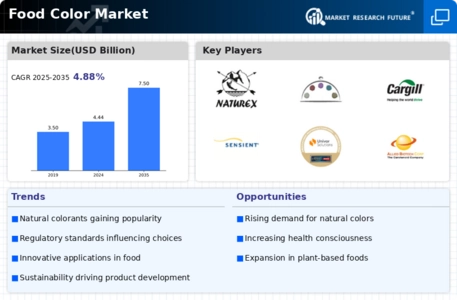

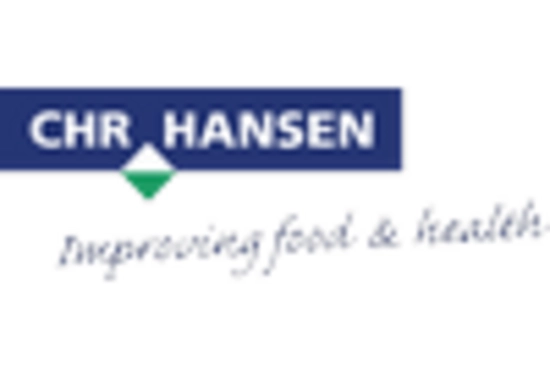
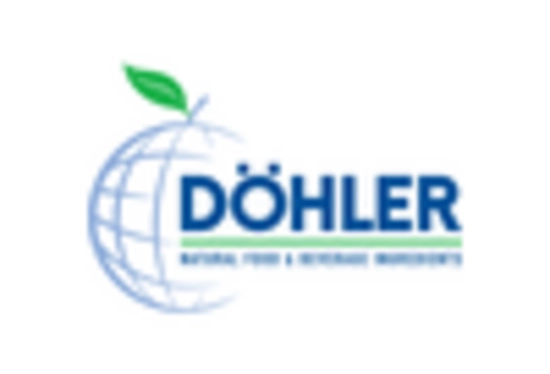
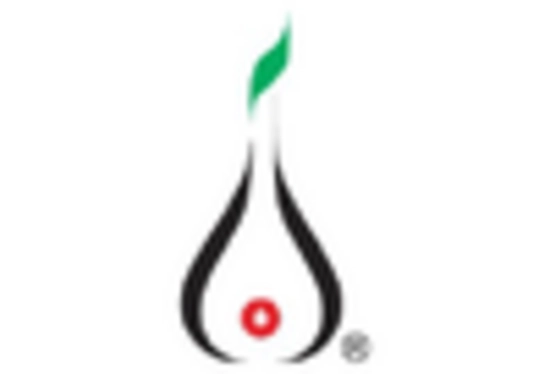

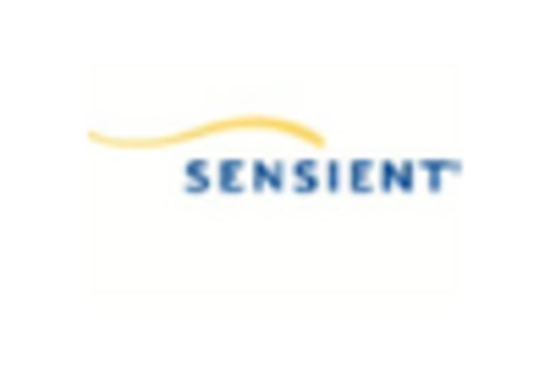

Leave a Comment